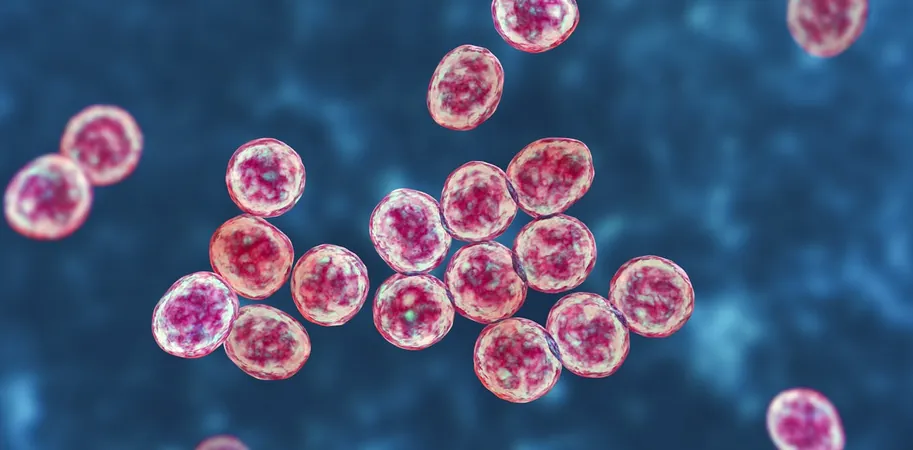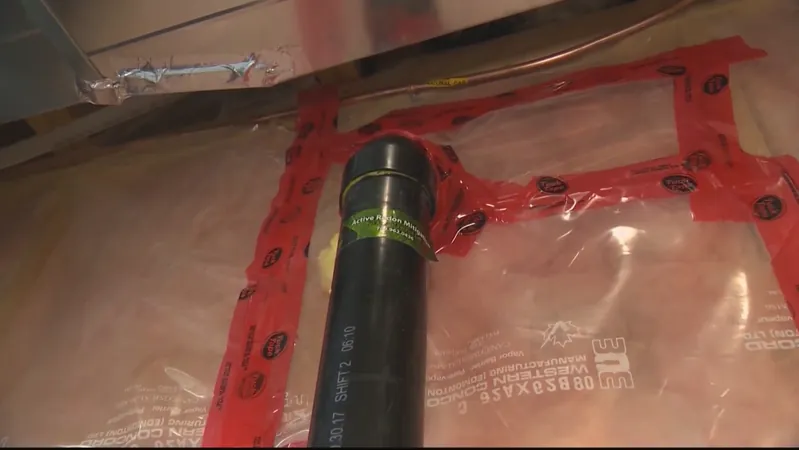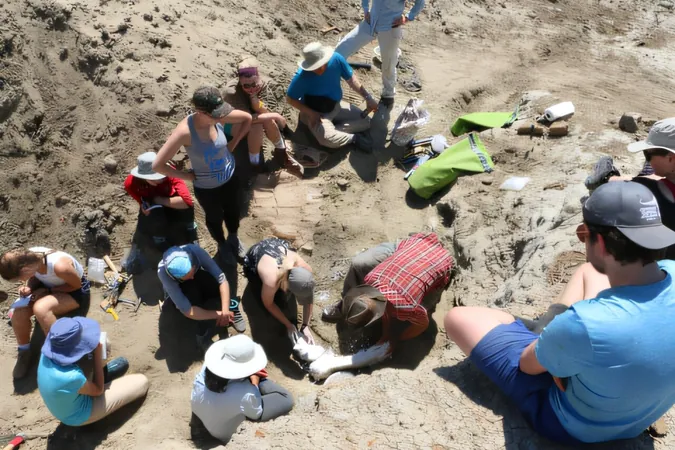
Shocking Discovery: Drug-Resistant Bacteria Found on Hospital Surfaces Puts Newborns at Risk Across Six Countries!
2024-11-20
Author: Emma
Antimicrobial Resistance: A Growing Global Crisis
Antimicrobial resistance (AMR) is a growing global crisis, with bacteria and other microbes evolving to outsmart antibiotics and other antimicrobial treatments. This phenomenon is particularly dangerous in cases of pneumonia, urinary tract infections, and sepsis—conditions that are often treated with antibiotics.
Newborn Vulnerability
Newborn infants are especially vulnerable to these infections due to their underdeveloped immune systems. The dire situation is worsened in low- and middle-income countries, where rates of infections in newborns can be 3 to 20 times higher than in more affluent nations. Alarmingly, in 2020 alone, there were 2.4 million newborn deaths attributed to sepsis during the first month of life, predominantly in sub-Saharan Africa.
Groundbreaking Study
In a groundbreaking study by researchers at the Ineos Oxford Institute for Antimicrobial Research, scientists examined drug-resistant bacteria residing on surfaces in 10 hospitals across six low- and middle-income nations: Bangladesh, Ethiopia, Nigeria, Pakistan, Rwanda, and South Africa. The team collected a staggering 6,290 surface swabs from intensive care units dedicated to newborn care and maternity wards.
Findings: Bacterial Contamination
Their investigation revealed that many of these surfaces were teeming with bacteria that carried antibiotic resistance genes, with the highest concentrations found around sink drains—an area often overlooked in hygiene protocols. These resistance genes included those that can affect the efficacy of carbapenems, which are critical drugs reserved for the most serious infections.
Alarmingly High Risks
The situation is deeply concerning. The study identified 18 different bacterial species on these surfaces capable of resisting treatment, including pathogens responsible for severe conditions like pneumonia and bloodstream infections. Notably, in one hospital, researchers discovered a bacterial strain that was not only present on surfaces but was simultaneously causing sepsis outbreaks in newborns, suggesting a dangerous link between environmental contamination and infant infections.
Mechanics of Transmission
The mechanics behind this transmission involve horizontal gene transfer—a process through which antibiotic resistance genes travel among bacteria via mobile genetic elements. This enables swift spread of resistance on shared surfaces, complicating treatment options and raising the stakes for patient health globally.
Essential Infection Prevention Measures
The implications of these findings are staggering. Enhanced infection prevention measures are urgently needed. Such measures could include: - Ensuring access to safe drinking water for all hospitals - Implementing comprehensive vaccination programs to reduce infections - Upgrading hospital waste management systems for better sanitation - Designing tailored infection prevention and control (IPC) training, which includes rigorous surface cleaning and disinfection protocols.
Challenges in Implementation
However, a significant hurdle remains: many hospitals in resource-limited settings lack the necessary funding and infrastructure to implement these life-saving techniques. To confront this emergency, financial institutions and governments must invest deeply into IPC programs that will help save thousands of lives, particularly among newborns.
Economic Impact of AMR
The economic ramifications tied to antimicrobial resistance are also staggering; in the U.S. alone, the costs associated with sepsis and pneumonia-related deaths soared to an estimated $8 billion back in 2006.
Call to Action
As the world confronts the escalating tide of drug-resistant bacteria, this study serves as a wake-up call, urging policymakers and healthcare systems worldwide to act swiftly before this public health crisis spirals even further out of control. The future of countless lives hinges on our response to this alarming threat. Will we take action before it’s too late?









 Brasil (PT)
Brasil (PT)
 Canada (EN)
Canada (EN)
 Chile (ES)
Chile (ES)
 España (ES)
España (ES)
 France (FR)
France (FR)
 Hong Kong (EN)
Hong Kong (EN)
 Italia (IT)
Italia (IT)
 日本 (JA)
日本 (JA)
 Magyarország (HU)
Magyarország (HU)
 Norge (NO)
Norge (NO)
 Polska (PL)
Polska (PL)
 Schweiz (DE)
Schweiz (DE)
 Singapore (EN)
Singapore (EN)
 Sverige (SV)
Sverige (SV)
 Suomi (FI)
Suomi (FI)
 Türkiye (TR)
Türkiye (TR)